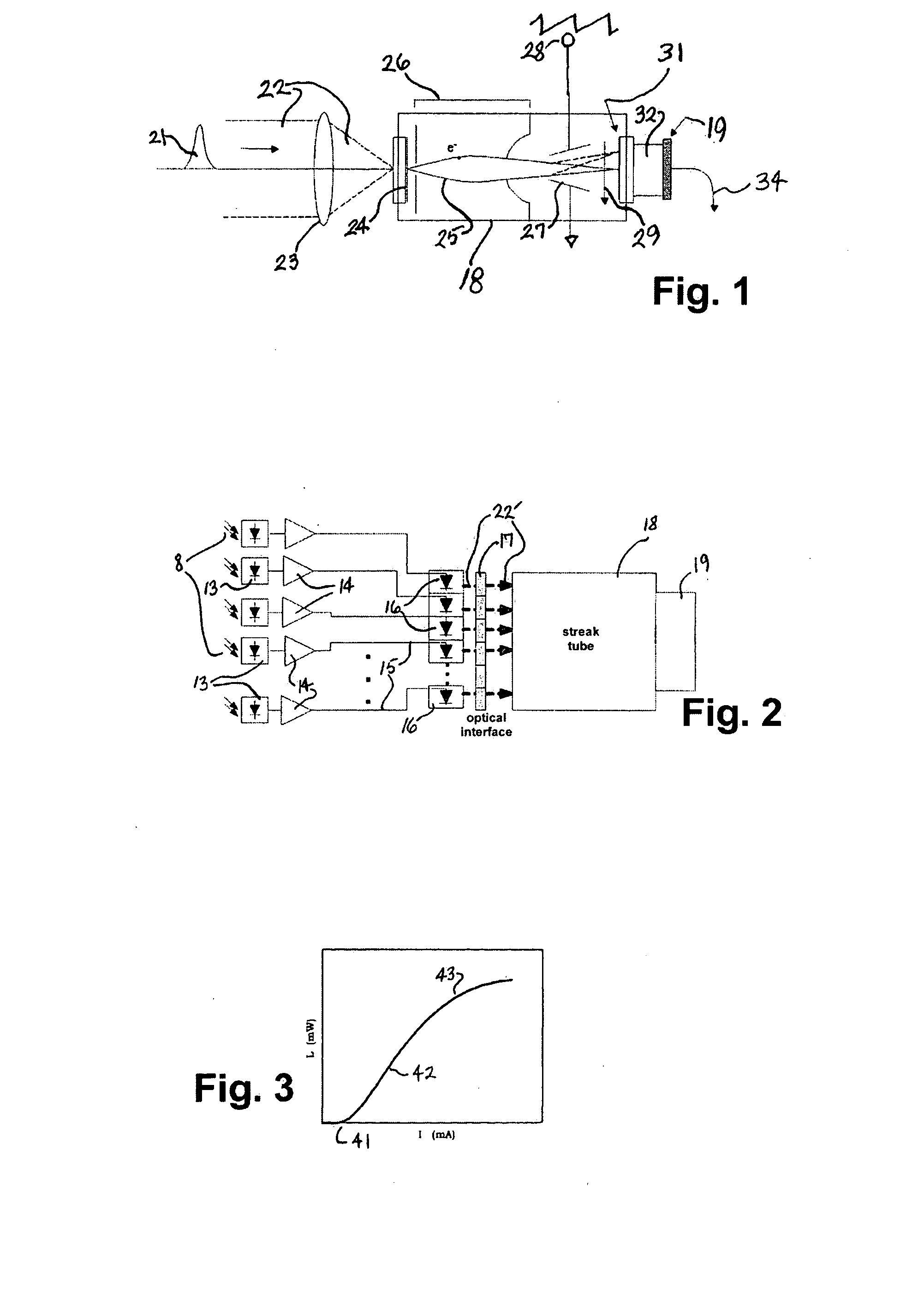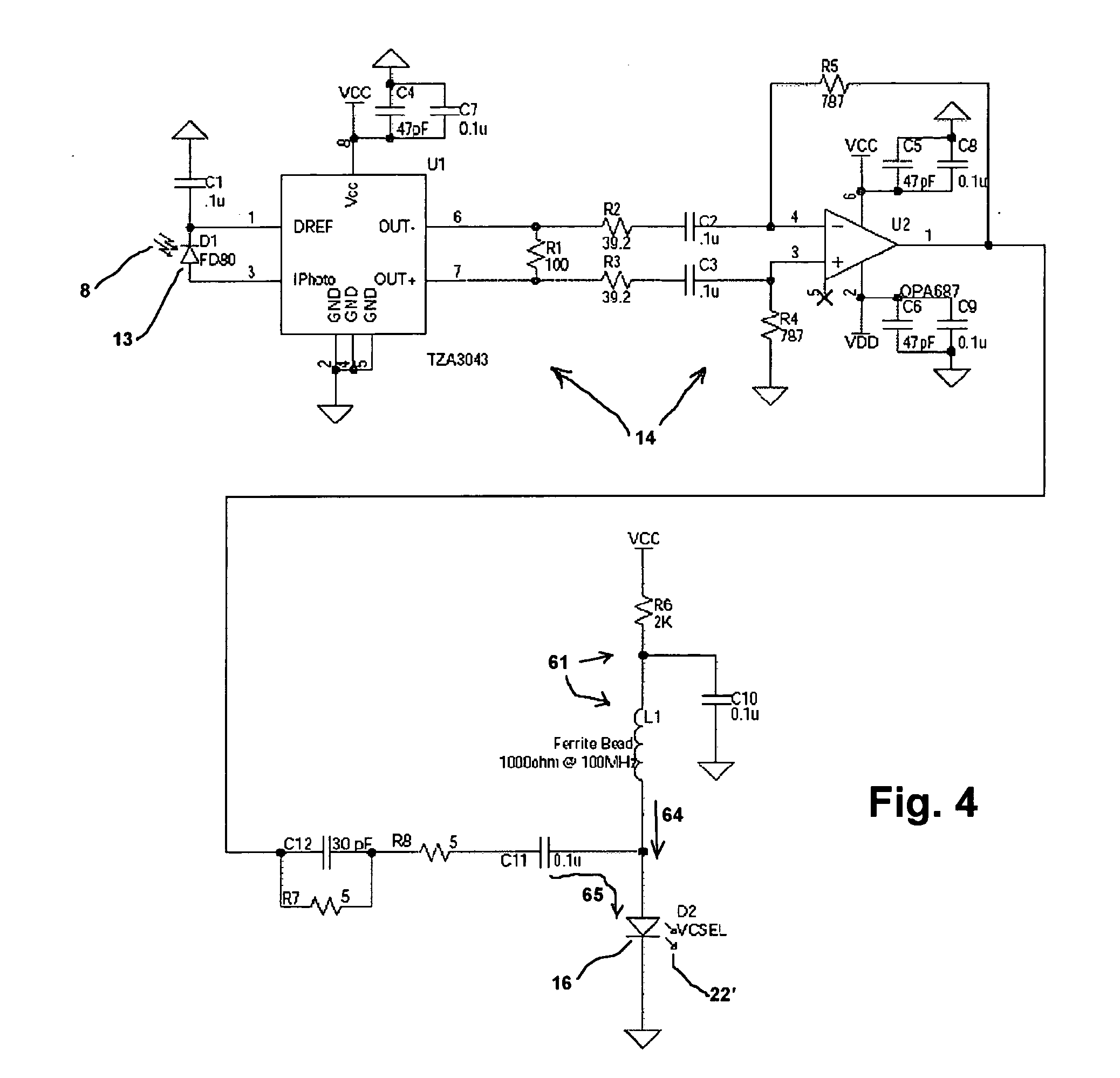Ultraviolet, infrared, and near-infrared lidar system and method
a lidar system and ultra-violet technology, applied in the field of ultra-violet, infrared, and near-infrared lidar systems and methods, can solve the problems of synchronization problems, inability to provide the resolution available with lidar, and inability to provide short-wavelength excitation too
- Summary
- Abstract
- Description
- Claims
- Application Information
AI Technical Summary
Benefits of technology
Problems solved by technology
Method used
Image
Examples
Embodiment Construction
[0107] In preferred embodiments, the invention provides a low-cost alternative to visible-light lidar. NIR radiation pulses can be projected toward objects, and the returned NIR pulses 8 (FIG. 2) converted, at the receiver, into pulses 22′ at a visible wavelength.
[0108] This visible radiation 22′ is then directed into a streak tube 18, effectively emulating the visible light 22 (FIG. 1) entering a streak-tube system conventionally. The remainder of the operation is closely analogous to generally conventional operation of the streak tube, excepting only possible effects of positional quantization along the slit direction—and the result is a streak-tube lidar receiver operable for NIR applications.
[0109] In principle a number of techniques could be used to accomplish the wavelength conversion. It is possible to use nonlinear optical techniques such as Raman scattering, stimulated Raman scattering, and harmonic frequency generation to achieve wavelength conversion. Each of these tech...
PUM
 Login to View More
Login to View More Abstract
Description
Claims
Application Information
 Login to View More
Login to View More - R&D
- Intellectual Property
- Life Sciences
- Materials
- Tech Scout
- Unparalleled Data Quality
- Higher Quality Content
- 60% Fewer Hallucinations
Browse by: Latest US Patents, China's latest patents, Technical Efficacy Thesaurus, Application Domain, Technology Topic, Popular Technical Reports.
© 2025 PatSnap. All rights reserved.Legal|Privacy policy|Modern Slavery Act Transparency Statement|Sitemap|About US| Contact US: help@patsnap.com



